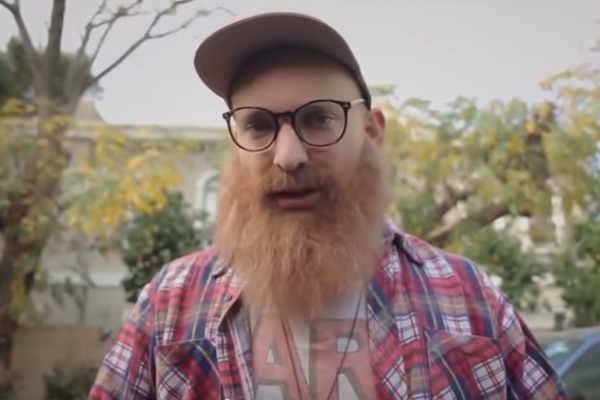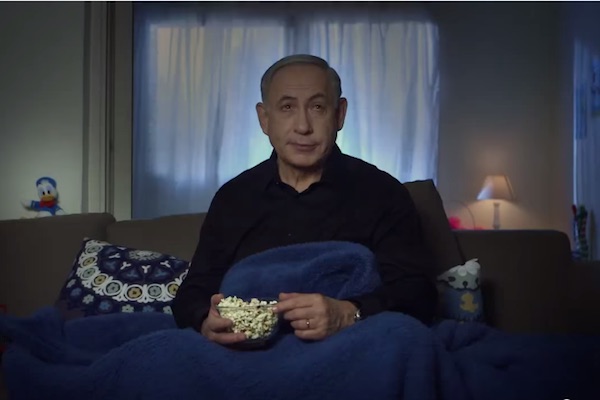Digital media has dictated the agenda of this election campaign. The parties flooded the web with funny videos, hoping to go viral. Media strategists know how to make their audience laugh, but they failed to establish a meaningful discourse with the electorate.
By Angela Gruber

Noy Alooshe is a sought-after man these days. His Youtube remixes mash up short bits of politicians’ speeches with catchy beats, creating viral music videos that make sport of the featured candidates, crossing all party lines.
But instead of hating Alooshe for mocking them, he has politicians calling him up after their speeches, suggesting sound bites he could feature in his videos, he said. “A few years ago, no politician wanted anything to do with YouTube or Facebook. Now the candidates hope their speeches and appearances become a meme on the Internet. They sometimes even choose a certain wording in order to make things they say catchier, so I can mix it.”
Alooshe’s biggest competitors are the political parties themselves. This election campaign, the Net has been flooded with an unprecedented number of campaign videos. All parties are vying for their videos to become viral sensations and have been allocating huge chunks of their respective budgets on digital media strategies. The video roundelay has changed the nature of the campaign tremendously, says media adviser Ron Shelly.
“There is no doubt the new media is taking a front seat in the campaign and made the politicians change the form of the campaign,” said Shelly, who is not affiliated with any campaign. “The politicians in their online videos started playing the role of YouTube stars. This has forced a new paradigm of conversation upon the campaign.”
Instead of talking about issues, Shelly described a campaign that is all about personalization and putting the front-runners of the lists in the perfect spotlight. “That’s why I call these elections the ‘selfie elections’.”
And indeed, the lead up to the election have shown the voters a new, playful side to their politicians. We saw Naftali Bennett as a Tel Aviv hipster, heard a chesty-voiced Isaac Herzog and got to meet the Bibi-sitter, who kicked off this season of election videos. Few of the videos talked about the occupation, the high price of housing or education.

“The unique thing about these videos is that the politicians are actually acting as someone else,” said Tamir Sheafer, a professor of political science and communications at Hebrew University in Jerusalem. In the end, this kind of acting put a stronger focus on the personalities of the campaigns.
Sheafer also recognizes a huge increase in the number of videos produced. “I’m sure the parties allocated more resources to this than ever before.”
Another thing that strikes Sheafer: “The videos are very blunt. They are harsher than a lot of the traditional TV ads. But I see this as a continuation of an overall trend towards more negative campaigning.”
With so many videos out there, is there a clear winner in the ‘selfie campaign’?
YouTube star Alooshe gave his kudos to Jewish Home, the Likud and the “Victory 15” group, praising the quality and humor of their videos. “I was really surprised by the Likud. We all thought right-wing people can’t be funny and suddenly there was the video of the Bibi-sitter,” he says. “It was the first time I saw something from Netanyahu that didn’t strike me as robotic.”
Media adviser Shelly also commended Jewish Home’s and Likud’s efforts. “Bibi was trying to adopt an Obama-like approach to the camera, successfully trying to take himself lightly and be funny.”
The Zionist Camp, according to Shelly, couldn’t keep pace with this and started putting videos up on the Net remarkably late. “They tried different creative strategies but weren’t coherent with their use of graphic design and image language,” Shelly said.
According to him, one goal of the parties was to get viral on the Net and then snatch up free airtime on television news, which would report on what is happening in the elections on Internet.
The fact that the videos failed to engage with real issues cannot be blamed on the Net, though, Karine Nahon says. She is an associate professor at the
University of Washington, and the Interdisciplinary Center (IDC) Herzliya and has published a book about virality on the web. “The parties weren’t forced to utilize the web in that way. They could have published videos about issues, but they chose not to.”
That was intentional, according to Nahon. “The parties wanted to be blurry on the issues and focus on the popular faces of the lists. Taking a clear stance would have scared away voters.”
But even from the funny videos, voters can gain a sense of understanding what the parties are about, Sheafer says. “The humor can also be revealing. Take the Likud video about ISIS. Voters can learn a lot about the hard line positions of the parties through the videos, if they look beyond the punchline.”
While the videos undoubtedly have made headlines and provided momentum for some candidates, Shelly doesn’t except them to be decisive on voting day. “The elections are going to be determined based on the groundwork of the candidates and their ability to convince people face-to-face. Social media won’t achieve that. Humor does not change voting behavior.”
Angela Gruber is a German journalist, blogger and intern at +972 Magazine. She’s a scholar for the “trialog of cultures” scholarship of the German Quandt foundation and reports from Israel. Follow her on Twitter: @netzkolumnistin.

